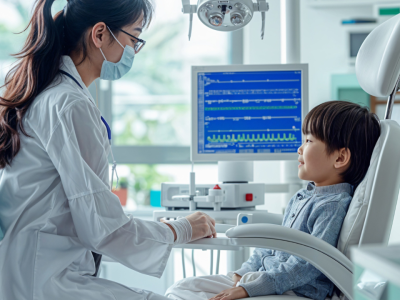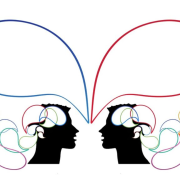
Pimples are some of the most irritating things that you can find in your body. They form various remains on your skin. These lumps can happen due to sweat and clogging of skin pores. However, a pimple on penis can be one of the most painful, considering it happens in your sensitive genital area.
To reduce the pain while wearing the underwear and make your penis look like how it should, read this post. Here, I have stated what causes these pimples on the penis to appear and how to treat them.
Pimple On Penis: Types
Pimple on penis can be of various types.
1. Genital Warts
The development of tiny, flesh-white pimple on penis head is one of the main signs of genital warts.
White pimples on penis might resemble cauliflowers and come in a wide range of sizes. Genital warts can also develop in regions close to the penis, including the scrotum or inner thigh.
Even though genital warts frequently go away on their own, they are simple to cure using creams or freeze and heat therapy.
2. Genital Herpes
On the penis or surrounding regions, genital herpes leads to the development of gray-white blisters with a red foundation. They can extend to the anus and are frequently painful and irritating.
The blisters may erupt into open sores, spill bodily fluids, and crust over. Additionally, lips or the mouth may develop blisters.
Antiviral medications are typically used to treat genital herpes and pimple on penis.
3. Syphilis
Syphilis can manifest as white or red, painless sores on or around the penis.
The disorder is brought on by a bacterial infection, which, if left untreated, poses a major health danger.
Antibiotics are frequently used to treat syphilis and pimple on penis.
Why Is There A Pimple On My Penis?
Pimple on penis can happen due to various reasons. Here are the most common reasons.
1. Razor Burns
Razor burns cause redness and discomfort on freshly shaven skin. Also possible are very minor cuts. Along with ingrown hairs, rash, and other pus-filled little bumps on penis may develop as the damaged area heals.
Bumps from razors typically heal by themselves. Apply body lotion to the region to calm down inflamed skin. To avoid further irritation, use body lotion after every shave.
2. Fordyce Spots
Fordyce spots are sebaceous glands that may be seen. These glands are often found below hair follicles. However, they can be seen on parts of the body without hair, such as the penis. Small patches that may be yellow or white are the outcome.
Fordyce spots can form within your mouth as well. You might be able to detect if you have pimple on penis like Fordyce spots. These spots typically develop in groups at a time.
Despite being benign, Fordyce spots may give rise to cosmetic worries. Laser treatment is one dermatological procedure that may be helpful. Another option is isotretinoin.
3. Tyson Glands
The frenulum (tiny tissue folds under the penis) is where Tyson gland lumps originate.
Small patches that may be yellow or white are the outcome. They don’t need to be treated because they are regarded as harmless.
4. Folliculitis
Bump formation around your pubic hair may be caused by inflamed hair follicles. The ensuing red lumps that resemble pimples have a connection to folliculitis. These lumps may itch and hurt as well.
Folliculitis may go away without needing any medication. However, persistent or reoccurring conditions can call for topical antimicrobials. It lessens current bumps’ irritation while averting new ones.
5. Ingrown Hair
A pimple on the scrotum is frequently caused by ingrown hair. When a hair twists and grows back into the skin, this occurs. It typically results in a red patch that may itch or be uncomfortable.
When dead skin cells clog hair follicles, ingrown hair may result. As a result, hair starts to grow inside or sideways rather than outward. Pubic hair is more likely to become ingrown since it is often curlier and coarser than the hair on the head.
In places that have been shaved, ingrown hairs are more prevalent. Ingrown hairs might result from shaving the hair on or around one’s testicles.
6. Molluscum Contagiosum
A virus called Molluscum contagiosum infects the skin. Children are more likely to develop it and often do not require treatment.
Small, firm to the touch, elevated dots are the primary symptom. They develop in groups, typically in body folds like the groin and armpits.
The virus can spread through close personal touch. Sharing towels, baths, or other items of clothing increases the risk of infection.
How To Get Rid Of Pimple On Penis?
Leaving pimples on your penis alone is the best course of action. Genital acne will often not become worse if you don’t intervene. If the region is maintained dry and clean, the pimple is also probably going to go away on its own.
You could think about asking your doctor about oral acne medicines if you experience an eruption of pimples in the vaginal area. Antibiotics are only used for a short time. However, they can help clean out excess bacteria that might cause acne outbreaks.
Another choice is the potent vitamin A derivative isotretinoin (Accutane). Taken on a prescription basis, this drug treats severe acne (usually cystic nodular acne).
Understanding Causes and Seeking Care
Discovering a pimple on the penis can be concerning, but it’s essential to approach the situation with a clear understanding and seek appropriate care if needed. Here are some points to consider:
1. Normal Skin Variations: Not every bump on the penis is a cause for alarm. The genital area, like any other part of the body, can have variations in skin texture. Pearly penile papules or Fordyce spots, for example, are benign and common occurrences.
2. Possible Causes: Pimples on the penis could be caused by various factors, including ingrown hairs, folliculitis (hair follicle inflammation), or even a blocked sebaceous gland. It’s crucial to evaluate any additional symptoms such as pain, itching, or discharge.
3. Sexually Transmitted Infections (STIs): While many bumps are benign, some can be linked to sexually transmitted infections. Conditions like genital herpes or genital warts can manifest as bumps. If there’s a possibility of an STI, seeking medical advice and testing is essential.
4. Hygiene Practices: Maintaining good genital hygiene is vital. Regular washing with a mild, fragrance-free soap can help prevent bacterial or fungal infections that may contribute to pimple-like bumps.
5. Avoiding Squeezing: It can be tempting to squeeze or pop a pimple, but this should generally be avoided. Squeezing may lead to infection, scarring, or further irritation.
6. Seeking Professional Evaluation: If there’s uncertainty about the cause of the pimple, persistent symptoms, or concerns about STIs, consulting a healthcare professional is crucial. They can conduct examinations, order tests, and provide appropriate treatment if necessary.
7. Practicing Safe Sex: To reduce the risk of STIs, using barrier methods such as condoms during sexual activity is essential. Open communication with sexual partners about sexual health and testing is encouraged.
Remember, self-diagnosis can be inaccurate, and a healthcare professional can provide the most accurate assessment. Timely and appropriate care ensures that any underlying issues are addressed promptly, promoting both physical health and peace of mind.
Frequently Asked Questions (FAQs):
Worried men have asked various questions regarding pimple on penis, which I have answered below.
People may mistake STD-related pimples, rashes, blisters, or lesions for unimportant skin diseases. The following STDs can result in skin issues resembling zits: A viral infection known as genital herpes can result in areas of fluid-filled sores that can crack open, drip fluid, and crust over.
Inflamed, elevated pimples filled with white pus might result from hair follicle irritation or infection. Folliculitis, or swollen hair follicles, frequently results from procedures like waxing, shaving, and chaffing that harm the skin’s surface. As a result of this injury, germs or fungi might enter the follicles.
The typical duration of a pimple is three to seven days. The majority of zits disappear on their own. However, it could take some time. Deep pimples, which are no-head pimples beneath the skin that may feel hard to the touch, might take several weeks, if not longer, to disappear.
Conclusion
Pimple on penis is more common than you think it is. It can happen due to various reasons and can be easily treatable.
If preventative measures have been done or if a pimple hasn’t cleared up after a week, it would be wise to see a doctor. To be sure they are not signs of a more serious ailment, it is crucial to seek medical assistance if there is any doubt about whether a growth is a pimple or not.
Read More:











